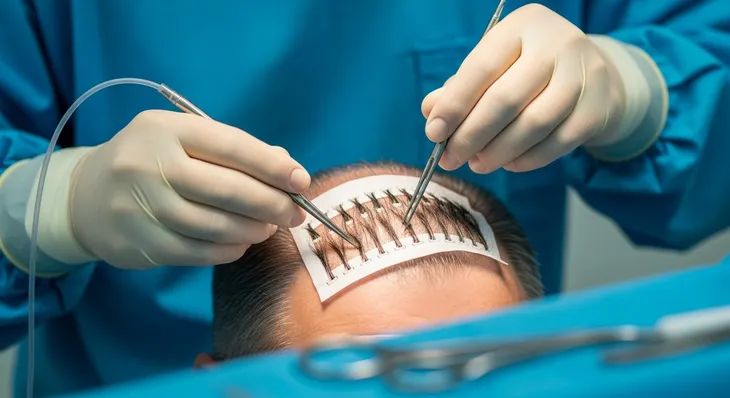Understanding NHS Rhinoplasty: Eligibility and Coverage Explained
Rhinoplasty, commonly known as a nose job, can be performed through the NHS under specific circumstances. Understanding the eligibility criteria, preparation requirements, and the distinction between medical and cosmetic procedures is essential for anyone considering this surgical option. The NHS provides rhinoplasty primarily for functional issues rather than purely aesthetic concerns, making it crucial to understand when this procedure qualifies for public healthcare funding.

Rhinoplasty is one of the most commonly discussed surgical procedures, yet many people remain unclear about when and how it might be available through the National Health Service. The NHS primarily funds rhinoplasty when there is a clear medical need rather than purely aesthetic desires. This distinction is crucial for anyone exploring their options for nose surgery within the public healthcare system.
What is Rhinoplasty and When is it Covered by NHS?
Rhinoplasty is a surgical procedure designed to alter the shape, size, or function of the nose. It can address both cosmetic concerns and medical issues. The NHS covers rhinoplasty only when there is a documented medical necessity. This typically includes cases where breathing difficulties arise from structural abnormalities such as a deviated septum, nasal valve collapse, or significant trauma that has impaired nasal function. Additionally, congenital deformities present from birth or disfigurement resulting from accidents, injuries, or previous surgeries may qualify for NHS-funded rhinoplasty. Purely cosmetic requests, where the nose functions normally but the patient desires aesthetic changes, are not covered by the NHS and would require private treatment.
Eligibility for NHS Rhinoplasty: Who Can Qualify for a Nose Job?
Qualifying for NHS rhinoplasty requires meeting strict clinical criteria. Your general practitioner must first assess your condition and determine whether your case warrants a referral to an ear, nose, and throat specialist or a plastic surgeon. Medical documentation proving functional impairment is essential. For example, if you experience chronic breathing problems, recurrent sinus infections, sleep disturbances due to nasal obstruction, or significant psychological distress from a congenital or traumatic deformity, you may be considered eligible. The NHS also evaluates whether the condition significantly impacts your quality of life or daily functioning. Patients seeking rhinoplasty solely for cosmetic reasons will not qualify for NHS funding and should explore private healthcare options. The decision ultimately rests with clinical commissioning groups and healthcare professionals who assess each case individually.
Everything You Need to Know About Getting a Nose Job on the NHS
The process of obtaining rhinoplasty through the NHS begins with a consultation with your GP. You will need to explain your symptoms, how they affect your daily life, and provide any relevant medical history. Your GP may conduct initial examinations or refer you for diagnostic tests such as nasal endoscopy or imaging studies. If your GP believes your case meets NHS criteria, they will refer you to a specialist. Wait times for NHS rhinoplasty can vary significantly depending on your location, the severity of your condition, and current healthcare demand. Non-urgent cases may face waiting periods ranging from several months to over a year. During your specialist consultation, the surgeon will evaluate your nasal structure, discuss potential surgical approaches, and explain expected outcomes. Pre-operative assessments, including medical clearance and sometimes psychological evaluation, are standard steps before surgery is scheduled.
Understanding the Costs and Alternatives
While NHS rhinoplasty is provided free of charge to eligible patients, those who do not meet clinical criteria or prefer not to wait may consider private treatment. Private rhinoplasty costs in the UK typically range from £4,000 to £7,000, though prices can vary based on the complexity of the procedure, the surgeon’s experience, and the clinic’s location. Some patients explore medical tourism options in countries where costs may be lower, though this carries additional risks and considerations. It is important to thoroughly research any private provider, verify their qualifications, and understand what aftercare and follow-up services are included. Insurance policies rarely cover cosmetic rhinoplasty but may provide partial coverage if the procedure addresses a documented medical condition.
Prices, rates, or cost estimates mentioned in this article are based on the latest available information but may change over time. Independent research is advised before making financial decisions.
Recovery and What to Expect After Surgery
Rhinoplasty recovery typically involves an initial healing period of one to two weeks, during which swelling, bruising, and discomfort are common. Most patients can return to work or light activities within two weeks, though strenuous exercise and contact sports should be avoided for at least six weeks. Full results may not be visible for several months as residual swelling gradually subsides. The NHS provides comprehensive post-operative care, including follow-up appointments to monitor healing and address any complications. Patients should follow all post-surgical instructions carefully, including keeping the head elevated, avoiding blowing the nose, and attending all scheduled check-ups. Complications, though rare, can include infection, bleeding, scarring, or dissatisfaction with aesthetic results. Open communication with your surgical team throughout the recovery process is essential.
Important Considerations Before Pursuing Rhinoplasty
Before deciding on rhinoplasty, whether through the NHS or privately, it is crucial to have realistic expectations about outcomes. Rhinoplasty can significantly improve nasal function and appearance, but results vary based on individual anatomy, surgical technique, and healing processes. Consulting with qualified professionals, understanding the risks and benefits, and considering alternative treatments such as nasal sprays, breathing exercises, or non-surgical interventions may be appropriate in some cases. For those considering private treatment, obtaining multiple consultations and comparing providers can help ensure you make an informed decision. Remember that rhinoplasty is a significant surgical procedure requiring careful consideration, proper medical evaluation, and realistic expectations about both the process and results.
This article is for informational purposes only and should not be considered medical advice. Please consult a qualified healthcare professional for personalized guidance and treatment.







